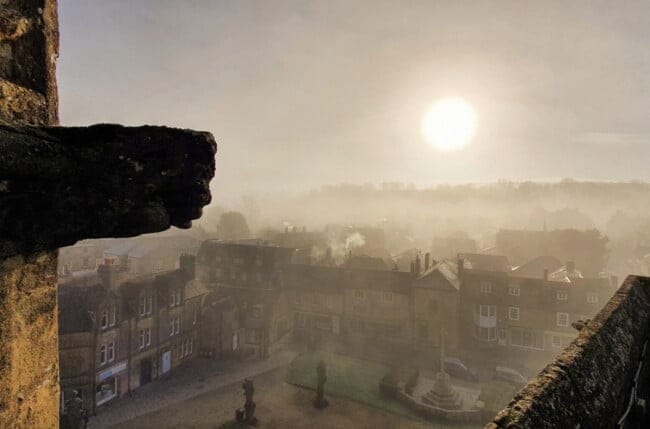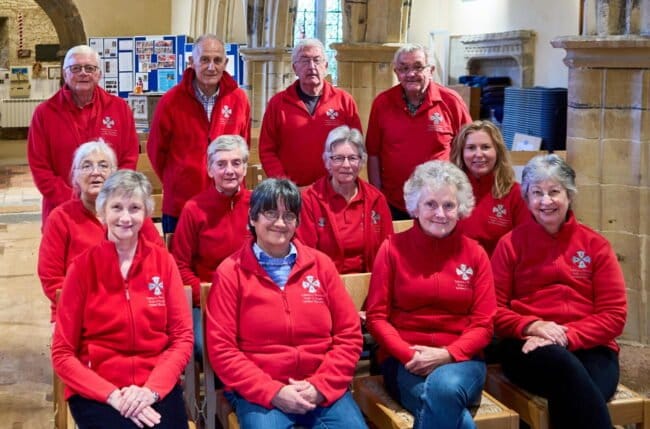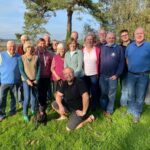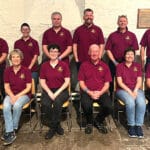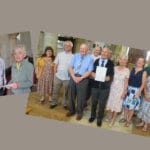In 1956, the Rev Frank Llewellyn Edwards, who had been Guild Secretary from 1913-1950, left £150 in his will to start a Guild Bell Fund.
The legacy was invested and produced about £6 in the first year. This was supplemented by the AGM Church Collection and what became an annual donation of ten guineas (£10.50) from Guild funds. The Fund, which eventually became known as the Llewellyn Edwards Bell Restoration Fund (LEBRF for short), was administered by the Guild Executive Committee which In those days met only once a year in February. The Committee decided on the value of any grants from the interest which then had to be ratified at the Annual Meeting. The grant could either be agreed or voted down and could not be altered. It was then paid out when the bell work was completed.
Frank Llewellyn Edwards was born in 1873 at Kington Magna, a village in Dorset not far from Gillingham. He was educated at Bath College and New College Oxford, followed by Ridley Hall in Cambridge. While at Cambridge, in 1897 he joined the Ancient Society of College Youths. He was ordained at Liverpool Cathedral in 1902 and served a number of chaplaincies in Spain and Cyprus. In 1908 he was inducted as Rector of Kington Magna – his birthplace – where he remained until retirement in 1956. He augmented the bells at his church to five, introduced handbell ringing at festivals, and using his international experience, taught the village children to sing in seven languages. He got involved in ringing organisations ranging from his local association to the Central Council, where he was ultimately elected a Life Member. He died on Christmas Eve 1956.
Wareham and Pewsey were the first recipients of grants from the new Fund, each receiving five guineas (£5.25). Bear in mind that the annual Road Tax in those days was £12.50, and the average house price £2000, so the grants were not a great amount.
By the 1970s Branches were beginning to make donations to increase the value of the Fund which, in 1972, stood at £415. In 1976, the first Open Day was organised boosting the Fund to £1600. This then became a popular annual event drawing in visitors from all over the country. Generally this was organised by the Guild Secretary who, until 1994, was also Guild Treasurer and LEBRF Administrator!
The first change in the rules occurred in 1978 when it was proposed that up to 25% of donations could also be given away as well as the interest on investments, which were then yielding 12.5%! Interest rates eventually went up to 15% thus helping to boost grants.
In 1982 the late Mr F G Cook of Chiseldon left a part of his estate to the fund (an action which was repeated by John Slade of Preston in 2011). A number of families over the years have also donated substantial sums In memory of past Guild members.
Interest rates started to fall dramatically in 1991 and the Branch donations almost matched earned interest. By now the capital fund was about £30,000, but to keep grants at a realistic level it was decided in 1997 to increase the amount of income given away to 75%.
With the reform and division of the many responsibilities of the Guild Secretary, Martin Moyes became LEBRF Administrator. He revised the rules following the guidelines of the Charity Commissioners so that the day to day management of the fund was carried out by nine Trustees and an Administrator, since increased to ten with the establishment of the Channel Islands Branch in 2022.
In 2010, the gift of Llewellyn Edwards turned full circle when the LEBRF was able to give his old parish of Kington Magna an exceptional grant of £10,000 towards the restoration of the five bells “of particular interest and quality”.
In 2020 Eric Hitchins (SDGR Vice President) asked the LEBRF to set up an online JustGiving account to support his 90th Birthday Challenge – he raised over £2k and we now use JustGiving as a primary method of fundraising for the LEBRF.
2021 was an important year for the Fund. In the spring the Guild AGM ratified a change in the Rules of the fund to enable us to use all donations as grants (previously a proportion had been retained within the capital fund).
Also in 2021, we received a particularly generous legacy of just over £120,000 in the will of Phil Lucas. His wish that this money should be used for bell restoration projects in the diocese has meant that the Trustees have raised grants offered from 10% to 20% of a project’s total cost. Phil was the last surviving member of a well known ringing family so the Trustees decided that this gift would be remembered as the Lucas Family Legacy.
With the continuing support of Branches and individual members, the value of the Fund is now over £260,000 enabling the Trustees to continue offering grants for bell restorations in the Salisbury Diocese.


